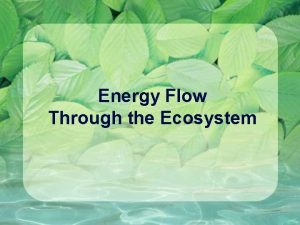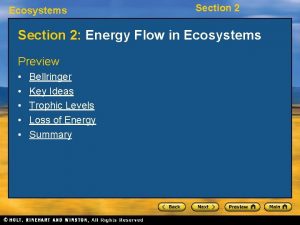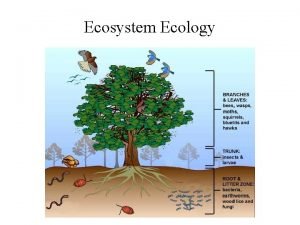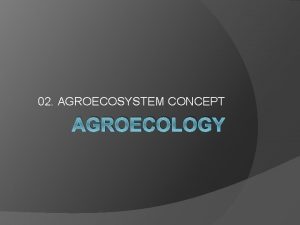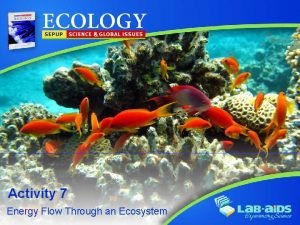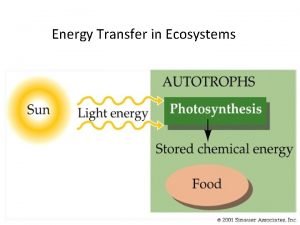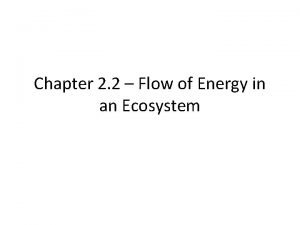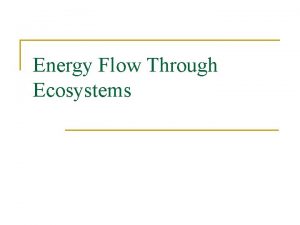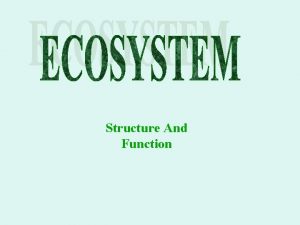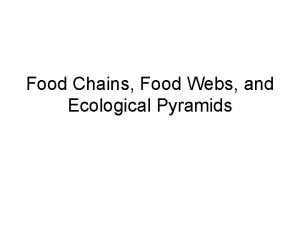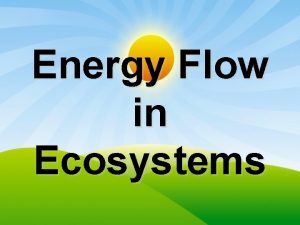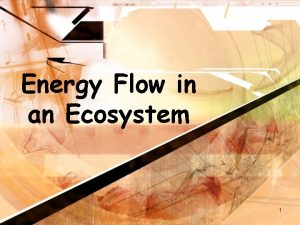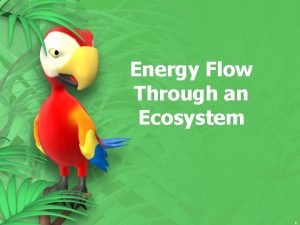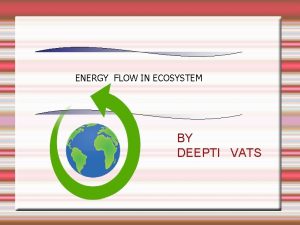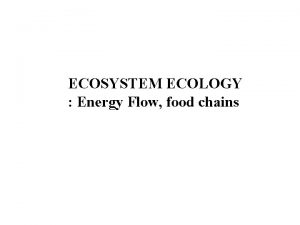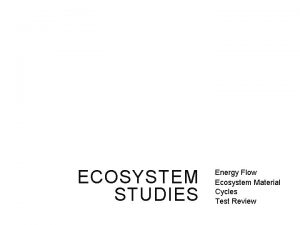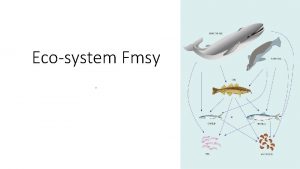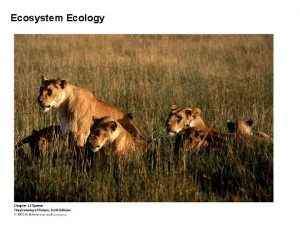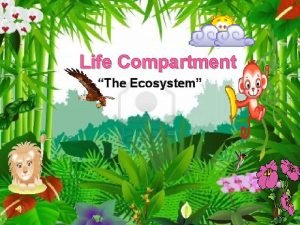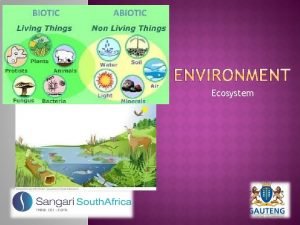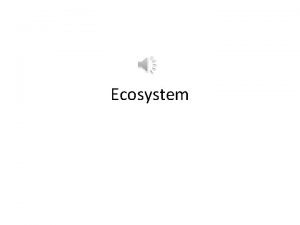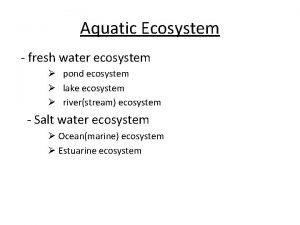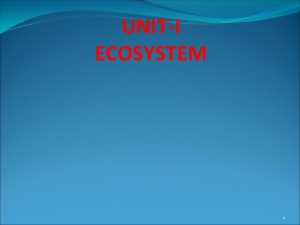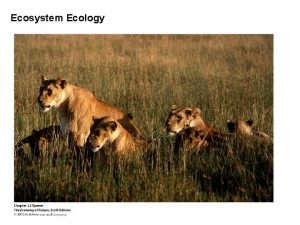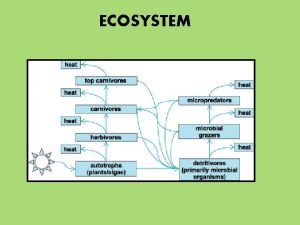34 2 Energy Flow ENERGY IN AN ECOSYSTEM















- Slides: 15

34. 2 – Energy Flow

ENERGY IN AN ECOSYSTEM AUTOTROPHS �An organism that collects energy from sunlight or inorganic substances to produce food Green plants and organisms that produce their own food in an ecosystem Are primary producers

HETEROTROPHS �Are consumers Organisms that get their energy by consuming other organisms �Can be herbivores, carnivores, omnivores, detritivores, or decomposers Herbivores: eat only plants Carnivores: eat meat Omnivores: eat plants and animals Detritivores: eat dead matter decomposers break down dead organisms through digestive enzymes


�All heterotrophs perform some type of decomposition consume other organisms and break down material into compounds �HOWEVER, it’s mostly the decomposers that break down organic matter and return nutrients to the ecosystem

MODELS OF ENERGY FLOW Food chains and food webs used to model energy flow through an ecosystem Grazing Food Web: begins with green plants like trees �From left to right: producers, primary consumers, secondary consumers Detrital Food Web: begins with detritus �Bacteria and fungi are food for larger decomposers �Can be joined with grazing food web

In some forests organic matter lying on forest floor contains over 2 x the amount of energy as in leaves! Trophic Level: each step in the chain or web �Level 1 = autotrophs (primary producers) �Levels 2+ = heterotrophs (primary, secondary, and tertiary consumers)

FOOD CHAINS �Shows one-way energy flow �Energy is gained by consuming lower levels �Organisms use energy for cellular processes (building cells and tissue) �Remaining energy released into surrounding environment

Detrital Food Chain: dead organic matter soil microbes earthworms

FOOD WEBS �Represents the many interconnected food chains/pathways through a group of organisms

ECOLOGICAL PYRAMIDS �Shows the relative amounts of energy, biomass, or numbers of organisms at each trophic level in ecosystems

PYRAMID OF ENERGY �As you move up a level, you lose 90% of the energy that was previously there (only 10% goes to the next level) Example: Level 1 – 100% of energy Level 2 – 10 % of energy remains (90% has been lost) Level 3 – 1 % of energy remain (90% of Level 2 s energy has been lost)


PYRAMID OF BIOMASS �Biomass: total mass of living matter at each trophic level (number of animals multiplied by their weight) �Decreases at each trophic level

PYRAMID OF NUMBERS �Each level represents the number of individual organisms �Decreases as you move up the pyramid
 How does energy flow through an ecosystem
How does energy flow through an ecosystem Chapter 2 section 2 flow of energy in an ecosystem
Chapter 2 section 2 flow of energy in an ecosystem Energy flow and material cycling in ecosystem
Energy flow and material cycling in ecosystem Agroecosystem concept
Agroecosystem concept Energy flow in ecosystem
Energy flow in ecosystem Describe the flow of energy in the kelp forest ecosystem.
Describe the flow of energy in the kelp forest ecosystem. Energy transfer in ecosystems
Energy transfer in ecosystems Principles of ecology 2 flow of energy in an ecosystem
Principles of ecology 2 flow of energy in an ecosystem Energy flow trophic levels
Energy flow trophic levels Energy flow through an ecosystem
Energy flow through an ecosystem How does energy flow through an ecosystem
How does energy flow through an ecosystem Flow of energy vs flow of matter
Flow of energy vs flow of matter Oikos meaning
Oikos meaning Deseart animals
Deseart animals In a food web what do the arrows represent
In a food web what do the arrows represent Abiotic factors
Abiotic factors
